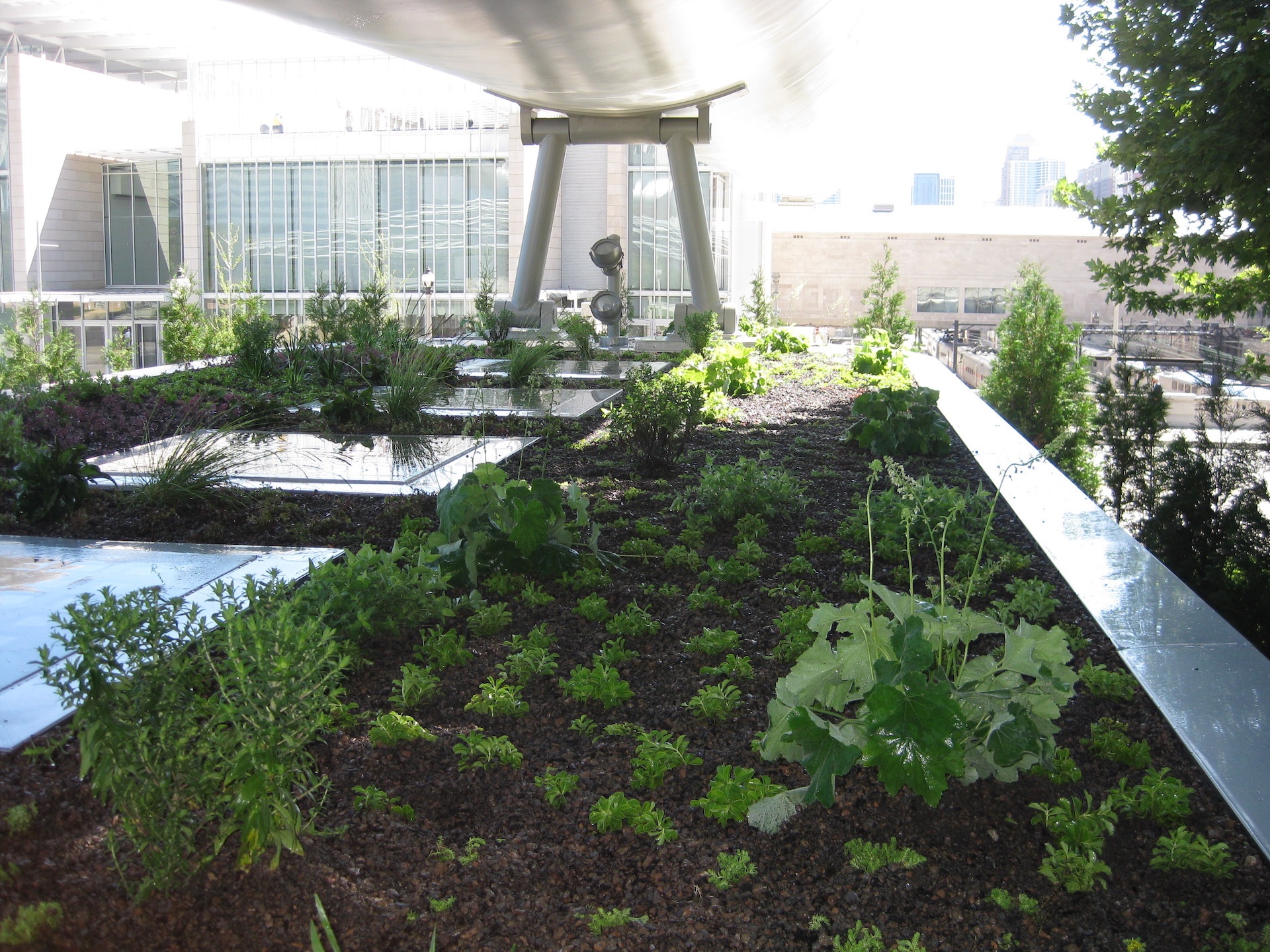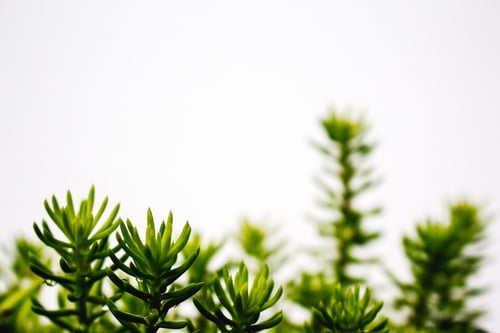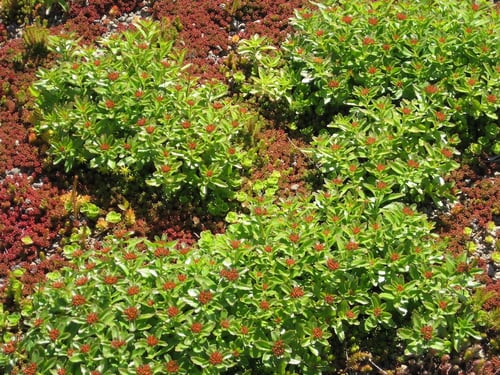
Form and function should play nicely together in green roofs, but an industry trend toward “instant green” is muddying the philosophy and giving consumers the wrong impression.
Many people are confused whether green roofs are supposed to prioritize beauty, transforming a barren landscape, or function, providing important environmental services.
For some reason, this leads people to believe they have to choose one or the other, and thus is a stereotype born: Do you want a scrubby, ugly, environmentally conscious green roof? Or do you want a blingin’ rain garden, which is pretty but focuses less on the whole sustainability thing?
This, to us, is silly. Do you have to choose between peanut butter and jelly? Macaroni and cheese? Tea and biscuits?
No. No, you do not. (And obviously you like tea and biscuits. We asked your coworkers.)
The thing is, form and function play very nicely together on green roofs … but you have to take a different approach to green roof aesthetics. It’s important to understand what green really is, as well as what you can do to ensure your roof prioritizes urban ecology, stormwater and other values in addition to beauty.
The Problem with Instant Green

Much of the industry is focused on providing “instant green,” throwing down as much plant life as it takes to produce a garden-like effect right off the bat.
While that’s pretty, certainly, it kind of misses the point: to produce a self-sustaining habitat that doesn’t need a lot of babying from here on out.
Babying, see, is much more resource-intensive, which works against the whole “sustainable” thing. It's not the right approach to green roof aesthetics.
Plus, green roof contractors often aren’t straightforward about the fact that the shiny sedum carpet they’ve rolled out looks like that because it just got off the truck from the nursery, where it’s used to mainlining fertilizers.
Guess what happens when it hits the barren, far-less-loving rooftop environment?
If you guessed “shriveled faster than Great Aunt Ruth in the swimming pool on Memorial Day weekend,” then you are correct.
As if more intensive maintenance-to-come and greater upfront fertilizer consumption isn’t enough, those green carpets are more expensive as well – meaning customers end up paying Rolls Royce prices for Go-kart products.
Not cool, man.
A Different Kind of Green

It’s really a question of what “green” is.
What if something is green on the outside, but requires frequent replacement and lots of inputs? Is that really green?
And what if a grass is brown, but offers amazing benefits in the form of wildlife habitat and stormwater management?
It’s not as simple as we might like, you see.
This isn’t to say that you have to forget about green roof aesthetics altogether, because that makes no sense. The point isn’t to dismiss the idea of beauty in favor of sustainability – which is a problem at the opposite end of the spectrum – but to ensure that a rooftop looks better and better over time, all while respecting nature.
After all, which would you prefer:
- A cost-effective, low-maintenance roof that starts as bare soil and cuttings and blossoms over the course of a few years, but doesn’t take a lot of maintenance or chemical inputs?
- A beautiful, lush and vibrant green roof from the start, which quickly starts to fail once the contractors walk away?
In the not-so-long run, it becomes clear that a truly “green” roof doesn’t necessarily have to start green, but will end up so. Whereas an instant “green” roof can work against sustainability, resiliency and even green roof aesthetics themselves.
Form and Function: The Ideal Combination
So how exactly do form and function combine? By ensuring that the latter naturally leads to the former, rather than hoping the former can somehow produce the latter. In many cases – especially with rooftop gardens, rain gardens and so forth – we do use a lot of green right up front. But always with an eye to what the system will look and function like in 5,10 or 15 years, not just today.
It’s a different way of looking at things, we know, but one our happy clients and customers can attest truly works.
If you’d like to learn more about our process and design a sustainable and beautiful green roof of your own, we’d love to help. Please get in touch with us at Ecogardens today.

